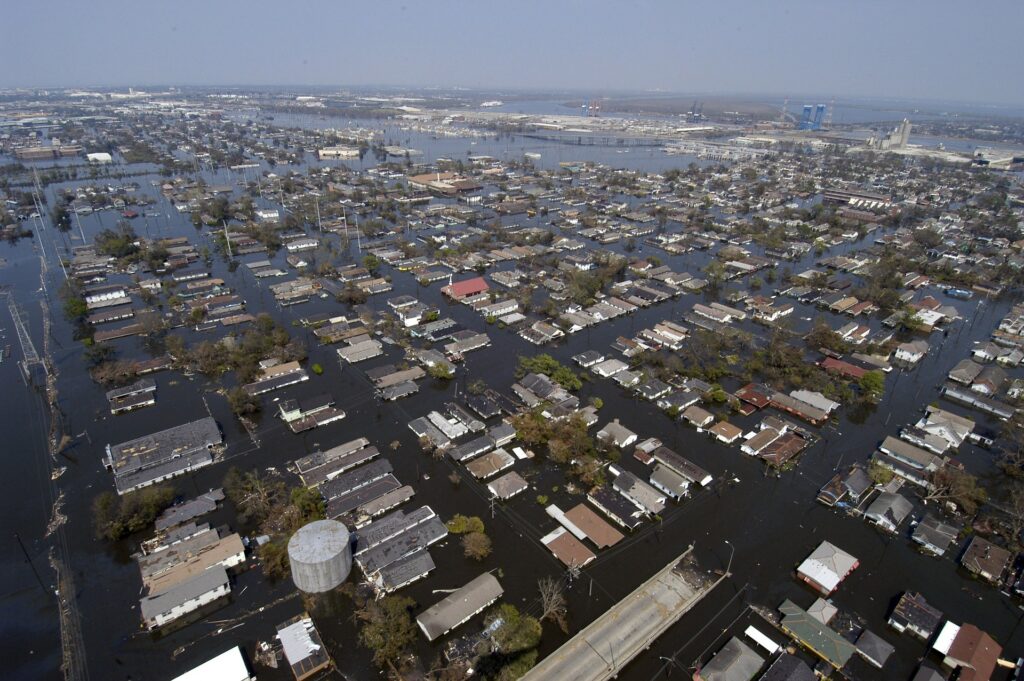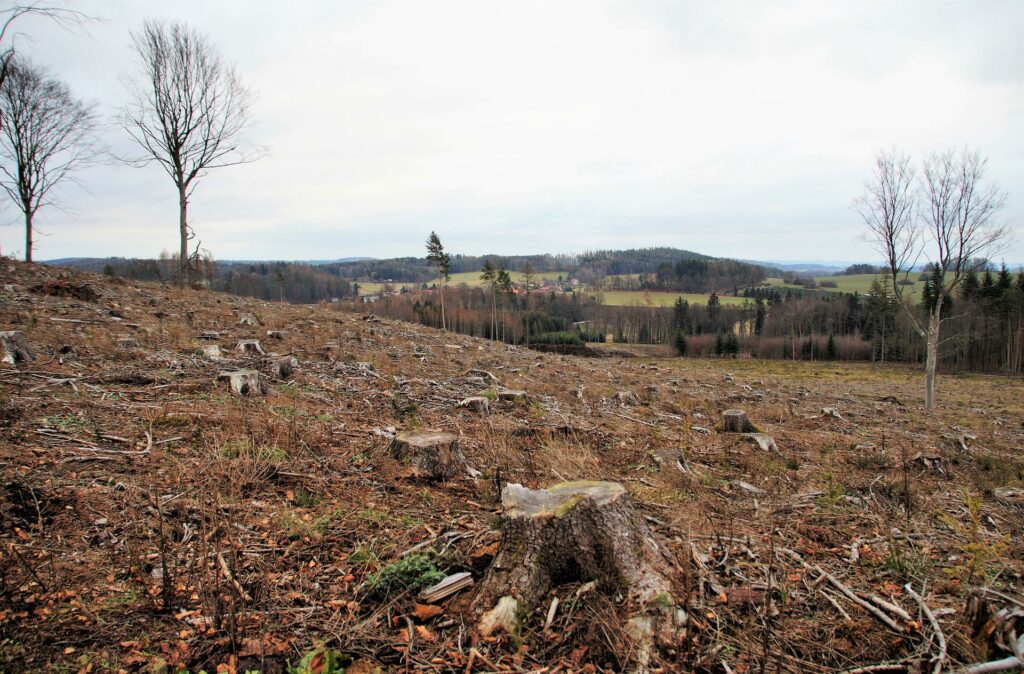Learning Objectives
- To foster an understanding of consequences of environmental issues such as deforestation to the world, living beings, and lives on earth.
Resources needed
- Internet connection
Warning!
You can try out all activities and excercises, but you can't save any data. Please login or create a free account to save your data.
Deforestation is a major environmental issues globally. This activity focuses on the consequences of deforestation on local and global levels to raise your awareness of this topic.
Exercise 1: We need more trees!
Here is a list of the 5 largest rainforests there are in the world right now. Please guess and rank them according to size from 1 to 5, with 1 being the largest rainforest.
| 5 Largest Rainforests | My Ranking |
|---|---|
| Australiasia | |
| Indo-Burma | |
| Congo | |
| Amazon | |
| Sundaland |
It’s Amazon, Congo, Australiasia, Sundaland, and Indo-Burma. Please check the following graph for more details.
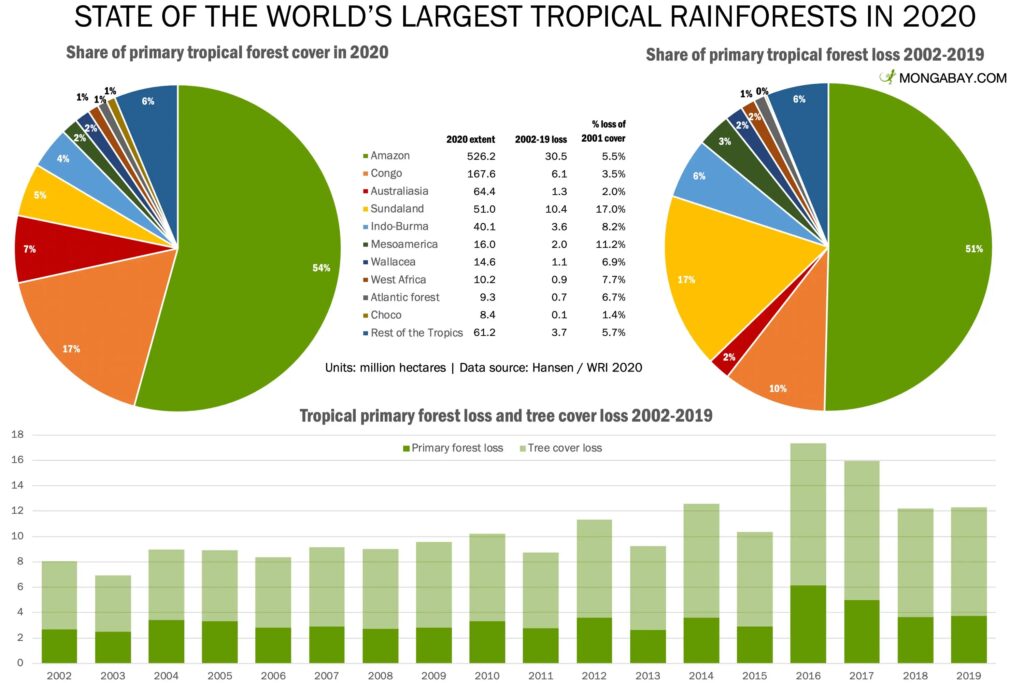
These forests support the lives of living beings on earth. They purify the air, filter the water, and provide natural habitats for all kinds of flora and fauna. They also protect us and the earth from the extreme pace of global warming. After all, they provide us humans with the needs of resources and natural materials. However, the forests that we need so much are currently in danger. The mass destruction of trees—deforestation—continues, sacrificing the long-term benefits of standing trees for the short-term gain to meet humans’ needs. Please watch the following video entitled ‘The tragedy of deforestation’ by BBC Earth to understand deforestation.
After watching the video, please answer the following:
How do you feel about the topic after watching the video?
What do you think we as global citizens can do to help?
Now please look at the graph below, it is from a report by World Wildlife Fund (2021, p. 32) and answer the question by making a guess.
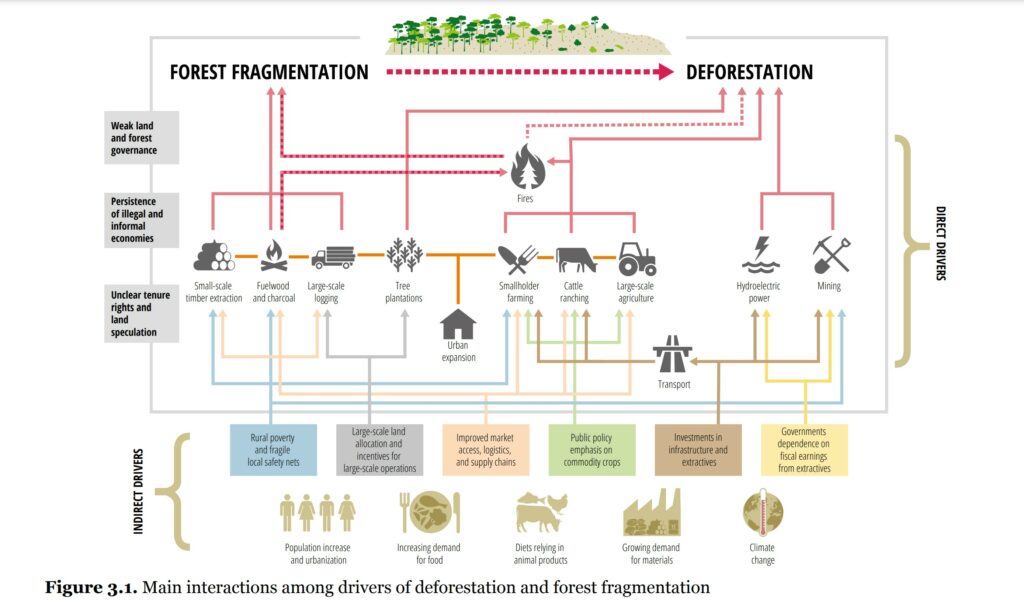
What do you think are the main drivers of deforestation in your country or region?
Now please check this data from a report by WWF entitled “Deforestation Fronts Drivers and Responses in a Changing World”. You can go directly to pages 26-27 and 31-32 on drivers of deforestation, and think whether you notice any of these deforestation drivers in your country or region.
Please reflect on how this topic is relevant to your area or school. Think about what can be done to address these issues and how you or the school can contribute. You can use the following questions for reflection:
To what extent do you think city or school policies reflect concerns on these issues?
Is there any activity or program at the city level that reflects concerns on the environment such as greening projects that you know of?
Is there any activity or project at your school that addresses these issues?
Some programs that have been done for the school projects related to deforestation are creating 3D deforestation model, class gardens, planting trees, fundraising, solving deforestation poster competition, creating videos to promote awareness of deforestation, or even marching to combat deforestation. You can take these as ideas for a concrete action through an activity or a project that your class or your school can do.
Exercise 2: Consequences
Deforestation or loss of wild forest habitats due to logging, farming, construction, or other human activities, has become a major global problem. The forests are shrinking, which can lead to problems such as natural disasters, biodiversity losses, soil erosion, greenhouse gas emissions and water cycle disruption. Combined, these issues affect not only wild animals and plants but also human beings.
Please look at the following pictures and read the accompanying article.
Please read this article entitled “Top 10 Consequences of Deforestation” by Catch Foundation. This article is about severe consequences of deforestation.
Now please rate the consequences below based on what is most relevant to you in your context. After the task, you will be able to see how other people rank these consequences in other parts of the world.
- Climate inequality & modification
- Increase in worldwide warming
- Increase in greenhouse gas emissions
- Dirt disintegration
- Flood
- Extinction of wild animals & environmental loss
- Acidic oceans
- Loss of biodiversity
- Instability of food in future
- Decrease in the lifestyle of people
Global results (all votes)
- Climate inequality & modification (7 votes)
- Increase in worldwide warming (7 votes)
- Increase in greenhouse gas emissions (7 votes)
- Dirt disintegration (7 votes)
- Flood (7 votes)
- Extinction of wild animals & environmental loss (7 votes)
- Acidic oceans (7 votes)
- Loss of biodiversity (7 votes)
- Instability of food in future (7 votes)
- Decrease in the lifestyle of people (7 votes)
Please answer the following questions:
To what extent does deforestation affect the environment where you live today?
How have the environmental problems such as deforestation affected the lives of the people or community around you?
Exercise 3: Let’s combat deforestation!
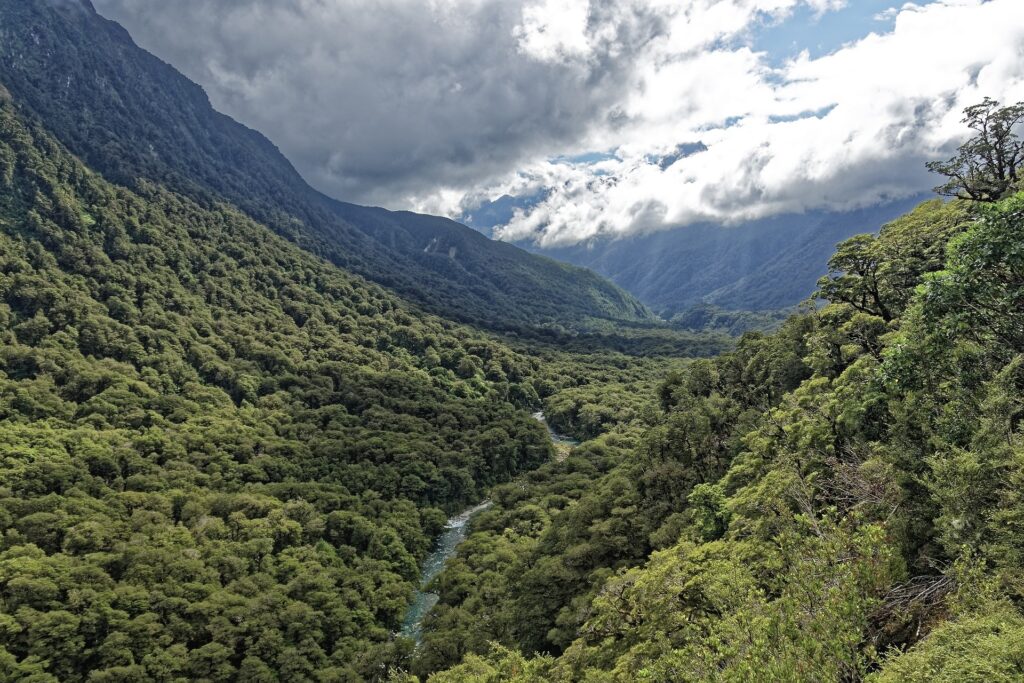
Concentrating on the consequences of climate change issues such as deforestation, especially after realising the effects it has on us and the planet, is certainly alarming. However, it is also important to focus on what we can do as individuals to be proactive and work to combat these negative effects. Our individual choices can make a difference collectively. Therefore, it is important to raise our awareness and the awareness of people around us about these issues. Before we carry on, please check the following tips of what we can do as individuals to combat deforestation:
Here are 5 possible options that we can do on a personal level to help combat deforestation:
- Practice sustainable consumption
If humanity were able to transition to sustainable practices and lower consumption in general, it would be possible to decrease consumption rates and thus, reduce deforestation. The first step in working towards this goal is to reduce overall consumption to decrease demand for products sourced from wood, which will in turn decrease deforestation. - 5Rs to lower the demand for logging
Another solution to deforestation is to incorporate practices of refusing, reducing, reusing, repurposing, and recycling regarding wood products. After reducing consumption as much as possible, reusing products until they are no longer usable and then recycling them are crucial everyday habits that will make a difference if collectively implemented. - Seek out certified sustainability products
Another step we can take is to seek out sustainability certified products when purchasing items such as coffee, furniture, fruits and vegetables, teas, cooking oils, clothing, and more. - Shop second-hand furniture instead of buying new pieces
When in need of a new piece of furniture, find vintage and second-hand pieces instead of going to major cheap or convenient stores. Sometimes there are sturdier, higher-quality pieces at affordable prices when thrifting, though this usually requires more time and effort in finding the right piece and transporting it once you find it. In some cases, this action may reduce demand for major furniture shops because they may have been tied to illegal logging practices. - Use electronic devices responsibly
Manage our electronic use better by taking care of our devices and repairing them when possible instead of rushing to get the latest version of whatever it is we think we need, we can contribute to decreasing the demand for mining minerals, which often takes place in priceless rainforests and on indigenous land. In turn, this will eventually contribute to decreasing the ‘need’ for deforestation
(Utopia, 2021, para. 4-17).
https://utopia.org/guide/6-solutions-to-deforestation-and-what-you-can-do/
Please reflect on the following questions after reading the tips above:


